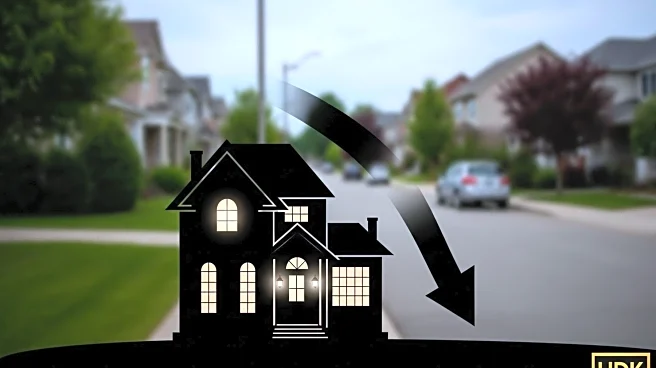What's Happening?
Recent data from Realtor.com indicates that home prices in Erie County have increased significantly. In July, the median home sale price reached $215,000, marking a 7% rise from June's median of $201,000. Compared to July 2024, the median price has surged by 10.3% from $195,000. Single-family homes saw a modest increase, with the median price rising to $212,500, up 1.1% from the previous month. Notably, the sales price for condominiums and townhomes skyrocketed by 65.7% to a median of $260,000, compared to $156,900 in June. The number of recorded sales in Erie County also rose by 10.2% from July 2024, totaling 281 transactions.
Why It's Important?
The rise in home prices in Erie County reflects broader trends in the real estate market, potentially affecting affordability for buyers and profitability for sellers. The significant increase in condominium and townhome prices suggests a shift in demand or supply dynamics, which could influence future development and investment in the area. As home prices continue to rise, potential buyers may face challenges in entering the market, while current homeowners might benefit from increased property values. This trend could also impact local economic conditions, influencing consumer spending and real estate investment strategies.
What's Next?
If the trend of rising home prices continues, it may lead to increased interest from investors and developers looking to capitalize on the growing market. Local policymakers might need to address housing affordability and availability to ensure that the market remains accessible to a diverse range of buyers. Additionally, real estate agents and financial institutions may adjust their strategies to accommodate the changing market dynamics, potentially offering new financing options or incentives to attract buyers.
Beyond the Headlines
The sharp increase in condominium and townhome prices could indicate a growing preference for these types of properties, possibly due to lifestyle changes or demographic shifts. This trend might encourage developers to focus on building more multi-family units, impacting urban planning and community development. Furthermore, the rise in home prices could have long-term implications for property taxes and local government revenue, affecting public services and infrastructure investment.










